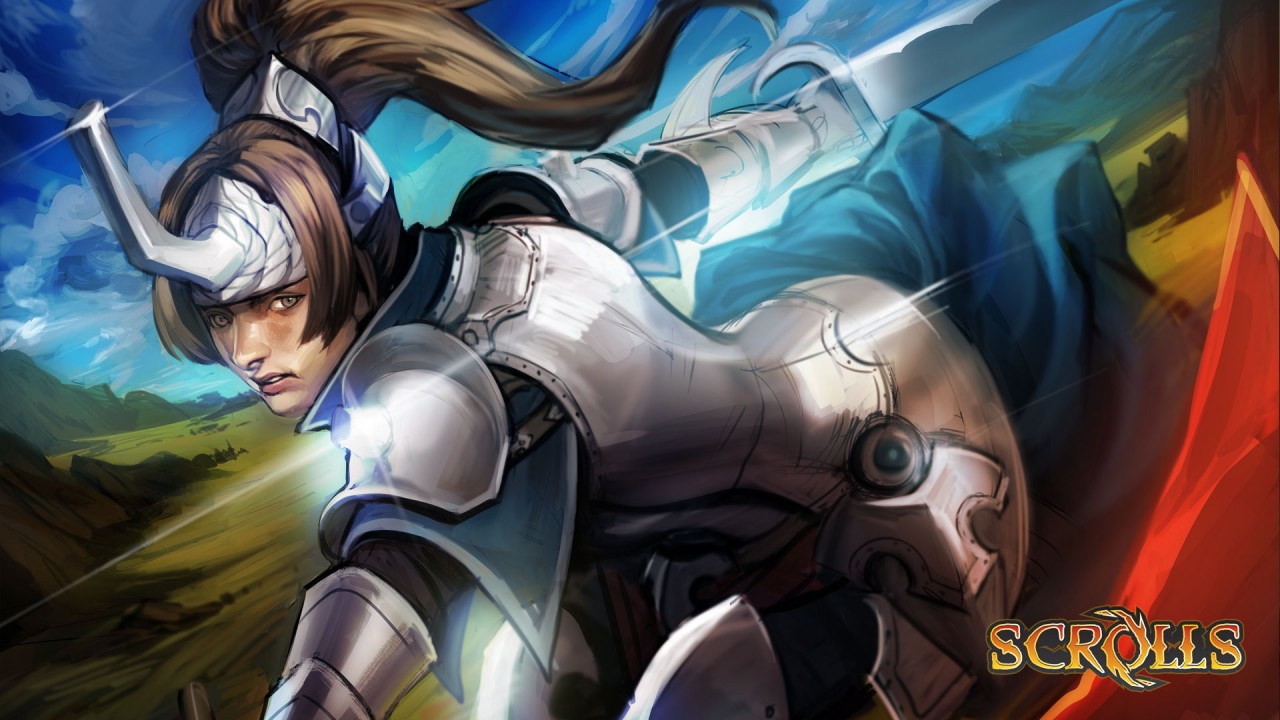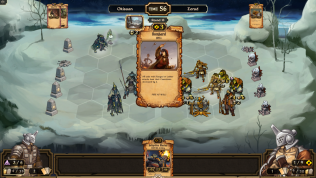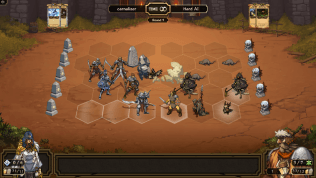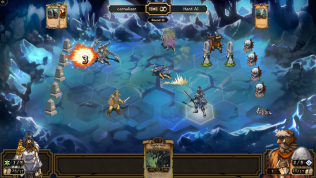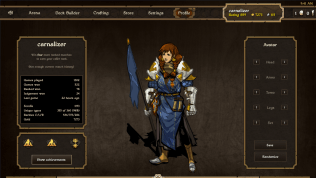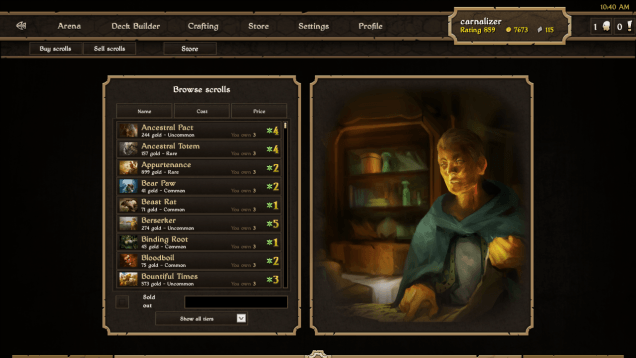With the rise of touch-screen tablets and cross-platform gaming, the last couple of years have seen something of a renaissance for digital card games - from lesser-known entrants like Solforge and Infinity Wars, to the annual iteration of Magic: The Gathering and the free-to-play juggernaut that is Hearthstone. But we’re getting a little ahead of ourselves. Almost a year and a half ago, before Hearthstone’s release, Mojang (the company responsible for a little game called Minecraft) quietly and with little fanfare, released a payable beta for what was to be their next game - Scrolls.
To some this may sound like heresy, but I’ve always preferred a digital card game over a physical one (Eye of Judgement excluded) simply because some of the more advanced physical games require an almost photographic memory and an encyclopaedic knowledge of the rule set before you can even start thinking about having fun. It can also often cost the same amount as a small country for you to have multiple decks containing several rare cards in each.
With digital-only variants I find there is also a bit more scope for creativity and flair - from the special effects of Hearthstone, to the fully animated cards of Infinity Wars, which arguably creates a more immersive experience for the player. I believe this digital format works particularly well with Scrolls - you’re constantly moving creatures around the board, adding buffs, placing structures… essentially, managing a very dynamic play field - something that would be very difficult to achieve and keep track of in a physical game.
The ruleset is decidedly simple, yet immediately familiar - each player controls one side of the board, which consists of five rows. Each row is made up of three hexagonal tiles and has an idol which the player must protect - the winner being the first player to destroy three of their opponent’s idols. Like most turn-based card games, you start by creating a deck of cards - or scrolls in this instance - consisting of creatures which attack or defend, spells and enchantments which can add buffs or destroy opponent enemies, and structures which can have special properties of their own, whilst needing to balance the requirement to press your advantage with the ability to defend your creatures and idols. Decks consist of a minimum of 50 cards (although you can go much higher if you desire) and you can only have 3 of the same card in a deck. Once your deck is exhausted, your discard pile is reshuffled and you pick from the same cards again - adding an extra layer of strategy in the form of how many cards you should have in your deck, as well how many of each.
The card format doesn’t stray too far from many other games of this ilk - they’re divided up into four separate color-coded themes, each with their own strengths, weaknesses and play styles. Cards come in three varieties - common, uncommon and rare, and you can mix and match colors in a single deck. I personally favor the green nature-themed deck - it’s a fast-play deck ideal for rushing your opponent, containing some fun combos which can be as diverse as utilising the dangerous attack of wolves, to harnessing the breeding power of rabbits (yes, really). What really makes Scrolls stand out from other games in this genre are those hexagonal tiles, allowing the player to move creatures across the board each turn and creating a much more fluid and tactical style of play.
There are several ways to play Scrolls. Solo features include a tutorial to get you started, a lengthy list of trials - pre-set scenarios where you face ever increasing odds, and A.I. battles with differing levels of skill. Online play contains the usual unranked and ranked matches against fellow scrolldiers (a collective term for Scrolls players which the community has adopted) and a Judgement mode, the now-standard style of game whereby you pay a virtual amount of gold, pick a selection of random cards to level the playing field against others, whilst gaining more rewards for the more games you win - similar to the Arena in Hearthstone.
In terms of presentation, artwork is always going to be subjective; but for me, Scrolls‘ cards have a charming, distinctive style, almost cartoon-like, with often humorous touches or descriptions added which give the cards and creatures a lot of character. The on-screen representations of their card counterparts are clear and effective, if a little basic, and some animations are re-used between a few of the characters. Normally this is because they’re part of a similar set or family - but by and large, there’s more than enough visual variety to keep things interesting. Sound-wise, effects are solid but kept to a minimum, whilst the in-game music is pleasant but can become repetitive. Thankfully, both can be turned off if required.
What makes Scrolls stand out from the others around it is the sense of fairness with card progression and a distinct lack of the feel of needing to grind to achieve those rare cards. Because this is not free-to-play and there is an entrance fee, the reward for winning a single match equates to being able to purchase 3 or 4 random cards (a random card costs 100 in-game gold and a win can generate between 300-400 gold.) This means that only after a few games you can quickly start to bolster your deck. Add to this the playing of the trials which can generate as much as 500 gold each, and the ability to buy card packs that guarantee a couple of rares in them - progress feels more than fair, which means you can focus on the fun side of actually building your deck and trying out the multitude of different combinations.
Make no mistake, this game is fun, whether it’s against the A.I. or, if you’re lucky enough, a real person. Matches typically last around 15 minutes (although it can take longer against a worthy opponent) and the experience can be as relaxing or as tense as you want it to be. Either way, you always know at the end of it you’ll be amply rewarded for your time. You can of course use real money to buy more in-game currency, but this shouldn’t be needed due to the abundance of gold the game gives you with each win - and restrictions on the amount you can spend are aimed to prevent the dreaded pay-to-win feeling which often plagues games of this ilk. There’s also an online black market where you can buy / sell your cards with real people for in-game currency, making it much easier to identify cards you may need and the ability to sell the ones you don’t.
It remains to be seen whether Microsoft’s recent purchase of Mojang will negatively or positively impact the future of Scrolls, especially with the number of online beta players continuing to dwindle over the past few months. However, with the official launch coming later this week, an online marketing campaign, as well as a new price point across several platforms, Scrolls may just become the next sleeper hit. As with any multiplayer-focused online game it will ultimately live or die depending on the numbers playing it - and I can only hope that over the next few months a new army of scrolldiers is born ready to do battle against some of the more established franchises out there. But there’s no doubting that Mojang has crafted a very addictive, very well-designed, and very different game as a follow-up to Minecraft.
